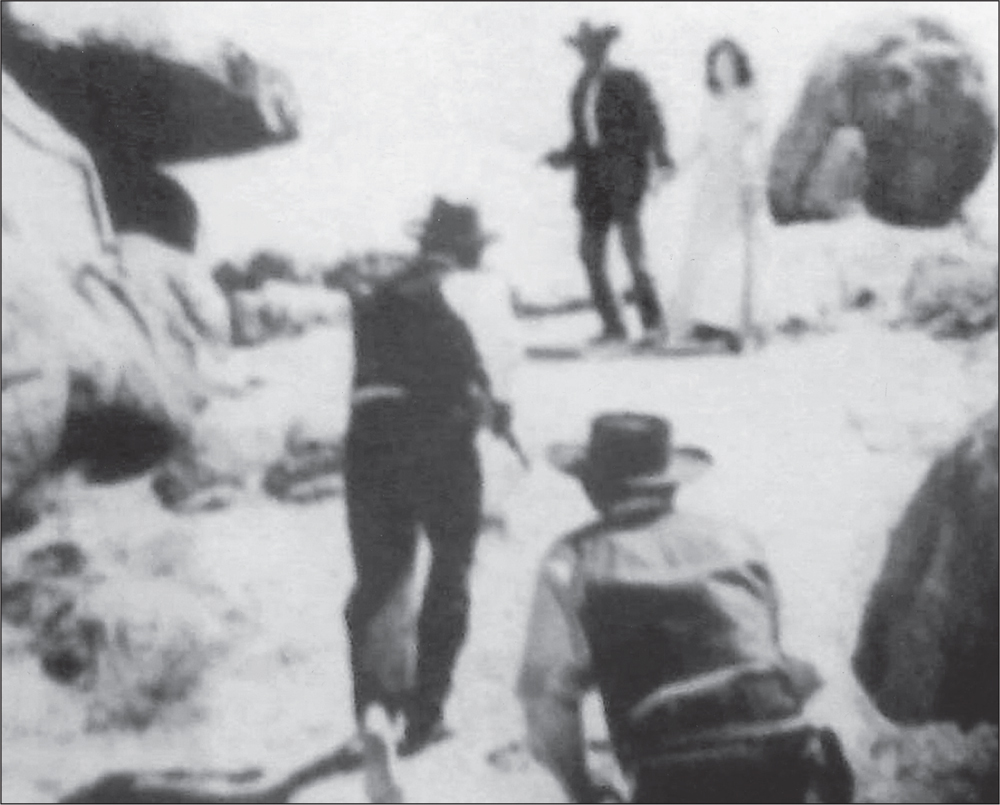
The image above is from Hell Bent for Leather with Audie Murphy and Felicia Farr. The image at left shows the author with his dog Doughgirl in same spot. Also pictured is Gary Cooper Rock, named after Lives of a Bengal Lancer was shot there in 1935.
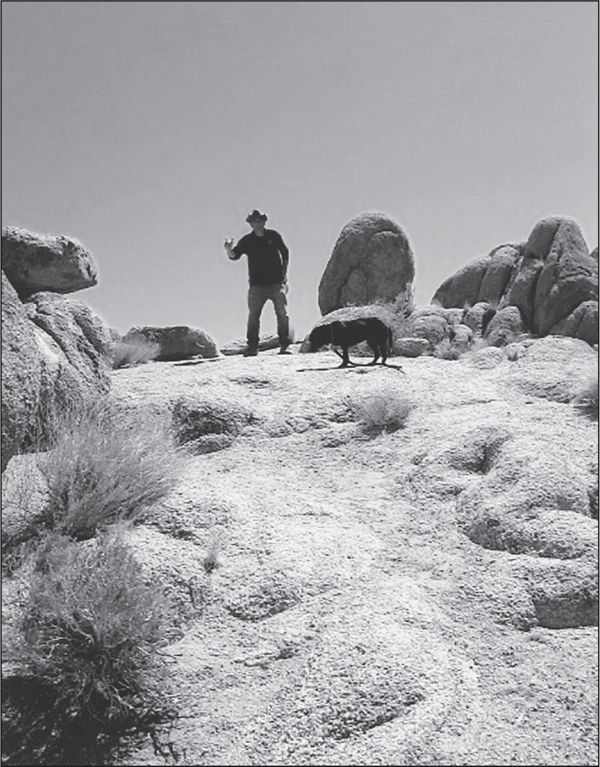
Seven
EXPLORING THE HILLS
The Alabama Hills, or “rocks” as some of the locals call them, are very special. It is a recreational area where residents may ride horses, and visitors can walk their dogs (on a leash) to explore the various filming locations discussed throughout this book.
Even though it can be viewed as a tourist destination, visitors should be cognizant of the fact that the Alabama Hills and the surrounding area are located in rough terrain. For example, the climate can be hot in the summer and incredibly cold in the winter. Rattlesnakes are prevalent, especially when venturing off-trail. When patrolling like the Light Brigade, visitors should dress in layered clothing, carry plenty of food of water, and wear comfortable shoes. Cellular phones may lose reception; thus, visiting in groups is advisable in the event that emergency medical attention is necessary. Further, visitors should use discretion in proximity of the boulders, as thousands of years of erosion have left the rocks brittle and unstable.
Feeding animals, disturbing plants, or taking artifacts as souvenirs is not permitted. If artifacts are located, visitors should contact the Beverly and Jim Rogers Museum of Lone Pine Film History.
When touring filming locations by vehicle, it is advisable to drive slowly, remain on designated roads, and stay close to the vehicle after exiting. Whitney Portal Road, which traces the route of Humphrey Bogart in High Sierra (1941), is closed in the winter. When open, visitors should exercise caution, as it is steep and winding. Overnight camping is allowed in authorized campsites.
If prepared, the Alabama Hills are truly worth exploring. Many visitors bring tangible photographs or digital images from a favorite movie scene and enjoy the hunt of finding the exact location where film stars once stood. Professional and amateur artists also frequent the area, especially at dusk, when the sunset alters the colors of the rocks to create jaw-dropping beauty.
The Alabama Hills can be equally enjoyable to those seeking picturesque landscapes and impeccable viewing locations to witness the grandeur of the Sierra Nevada.
To contribute to conservation efforts, such as “Don’t Crush the Brush”, visitors may obtain information from the Lone Pine Chamber of Commerce or the Alabama Hills Stewardship. Filmmakers seeking production permits or other necessary credentials should contact the Inyo County Film Commission and the Bureau of Land Management. Most importantly, visitors to the Alabama Hills should relaxingly enjoy the filming locations, have fun, and let the movies keep rolling along!

The image above is from Hell Bent for Leather with Audie Murphy and Felicia Farr. The image at left shows the author with his dog Doughgirl in same spot. Also pictured is Gary Cooper Rock, named after Lives of a Bengal Lancer was shot there in 1935.

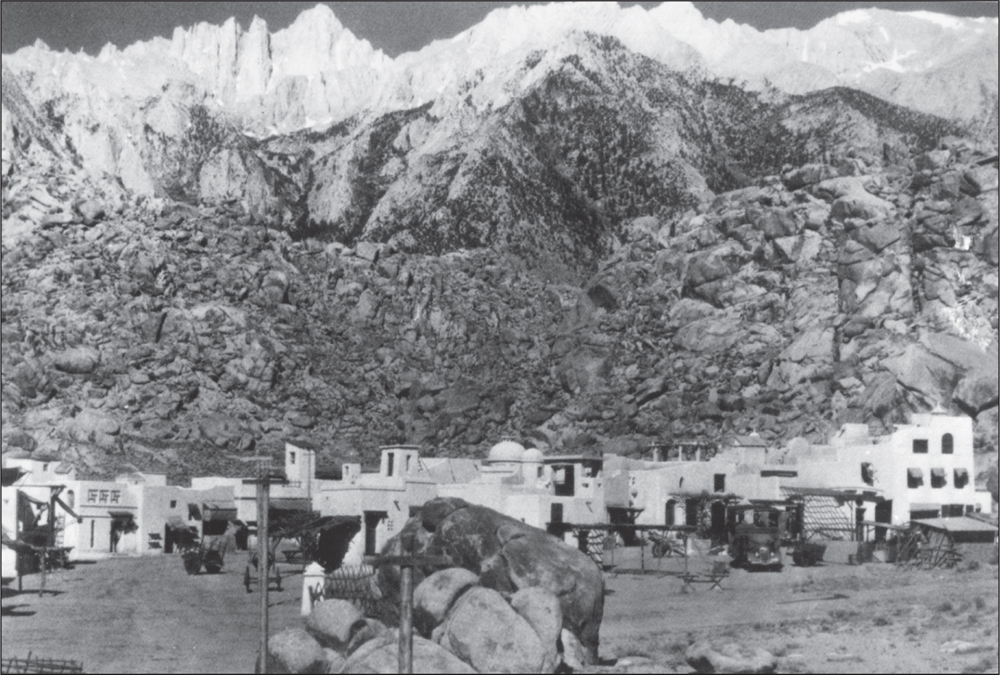
In the image above from Gunga Din, the town of Tantrapur is seen. Below, the author holds the Gunga Din DVD in the same spot where the town once stood.
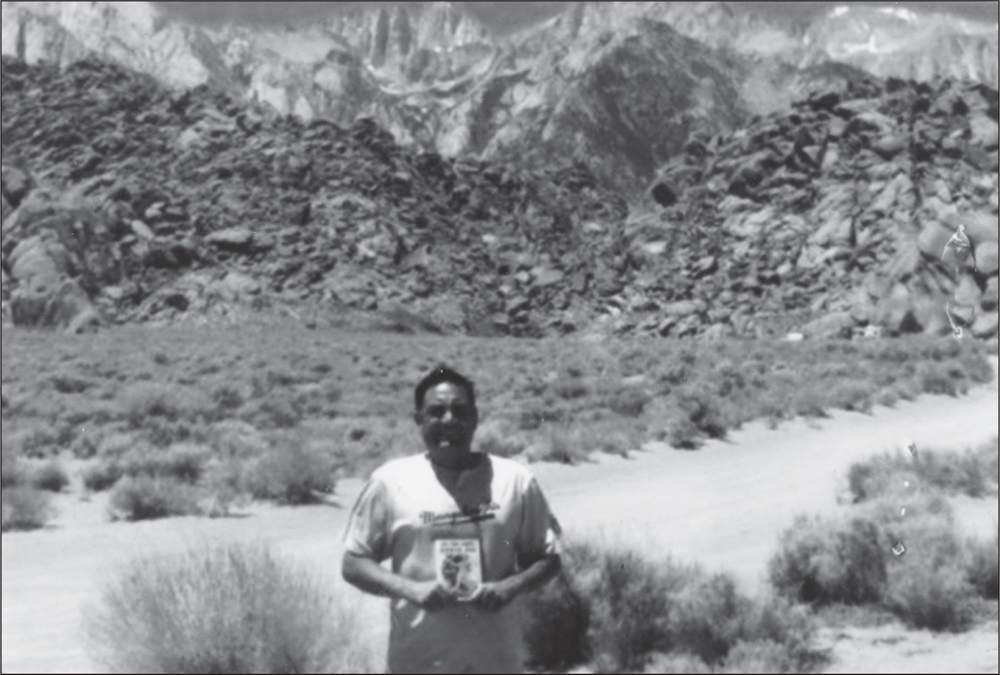
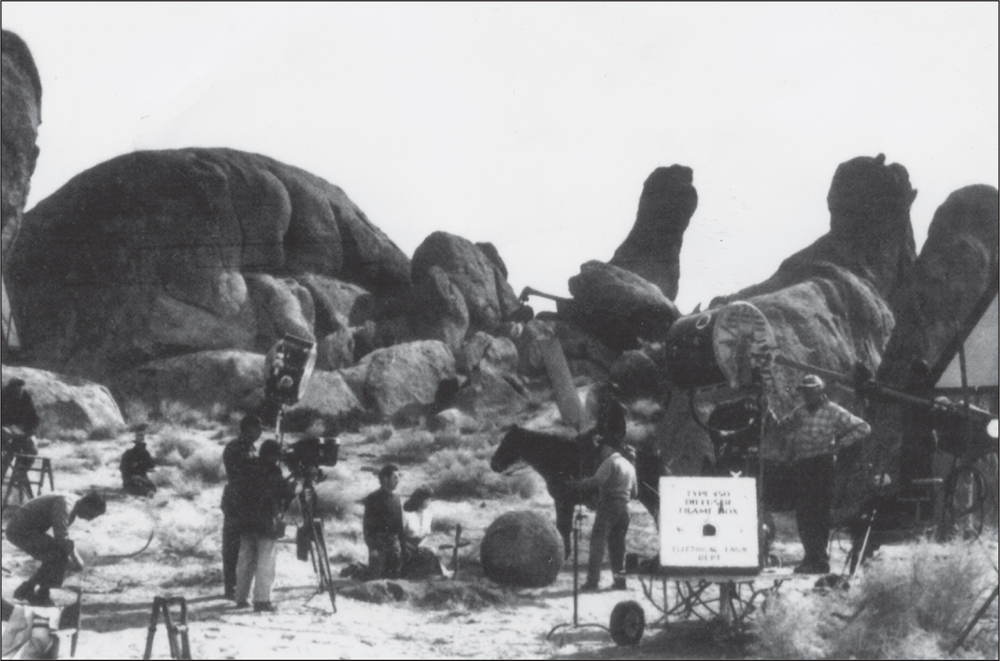
Pictured above is the Rawhide (1951) gravesite with filming crews. Below, the author is shown beside the same bowling ball rock, imitating the holding of the horse.
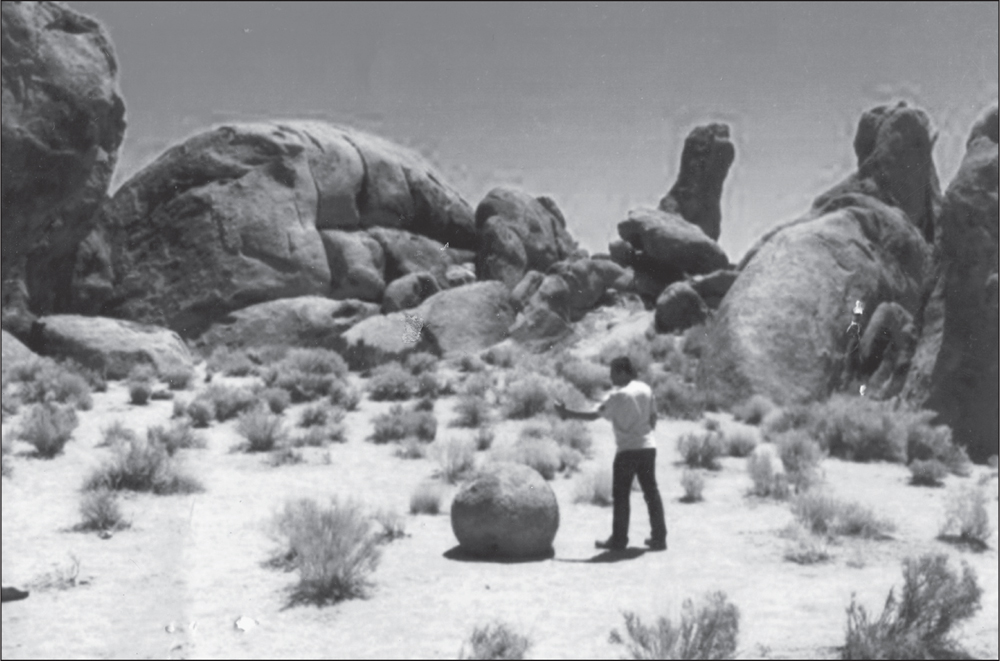
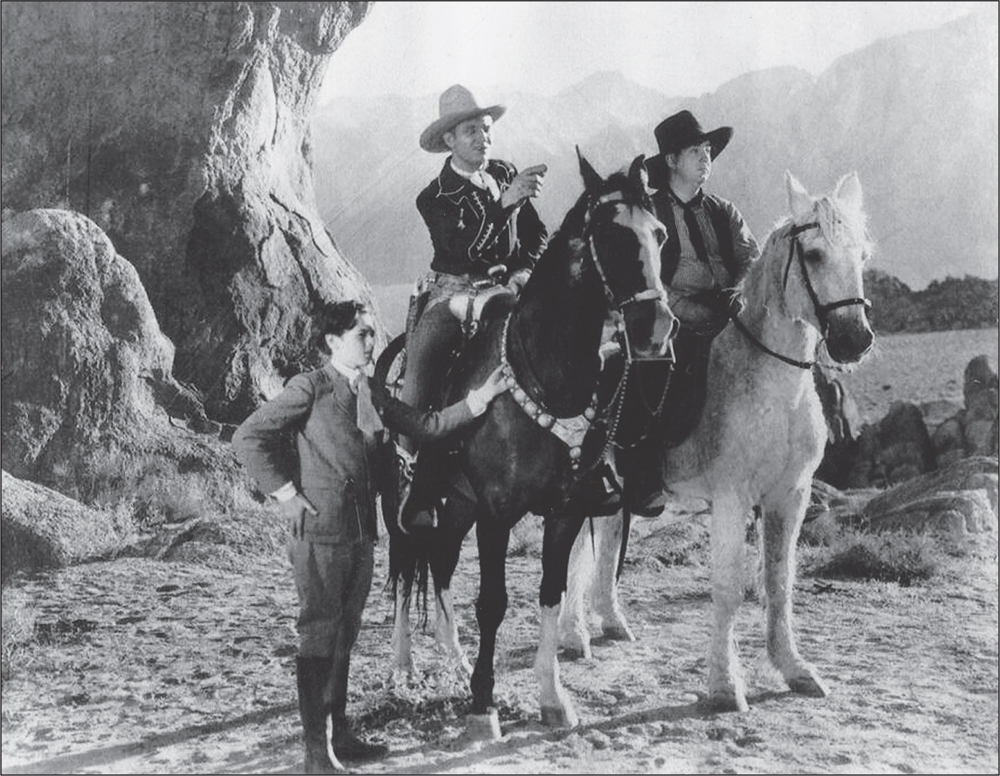
In this scene from Boots and Saddles (1937), Gene Autry is pictured at Gene Autry Rock. Shown below is Gene Autry Rock as it appears today.
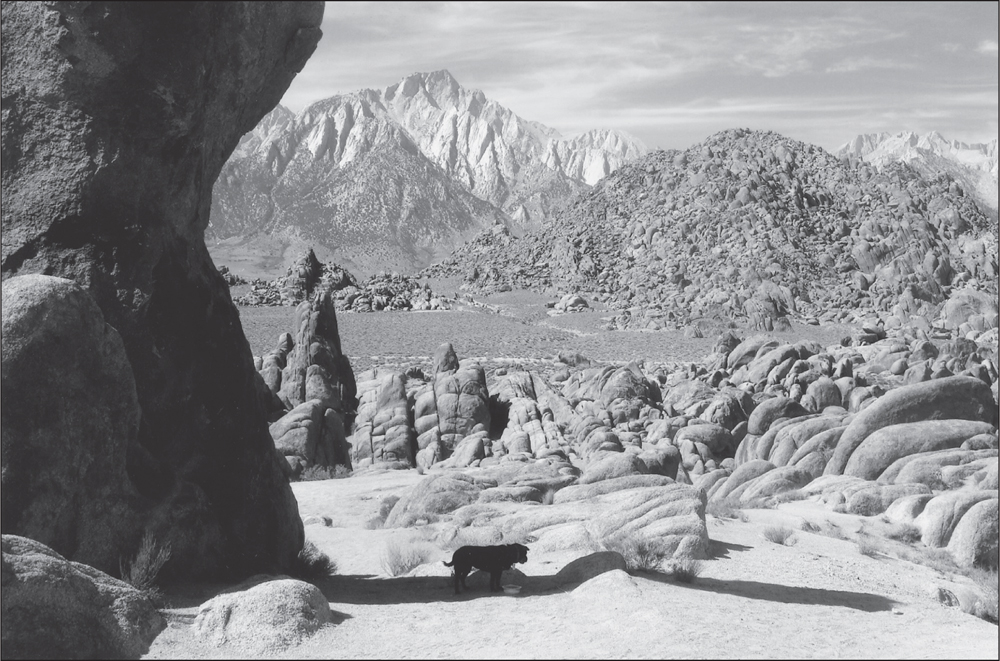
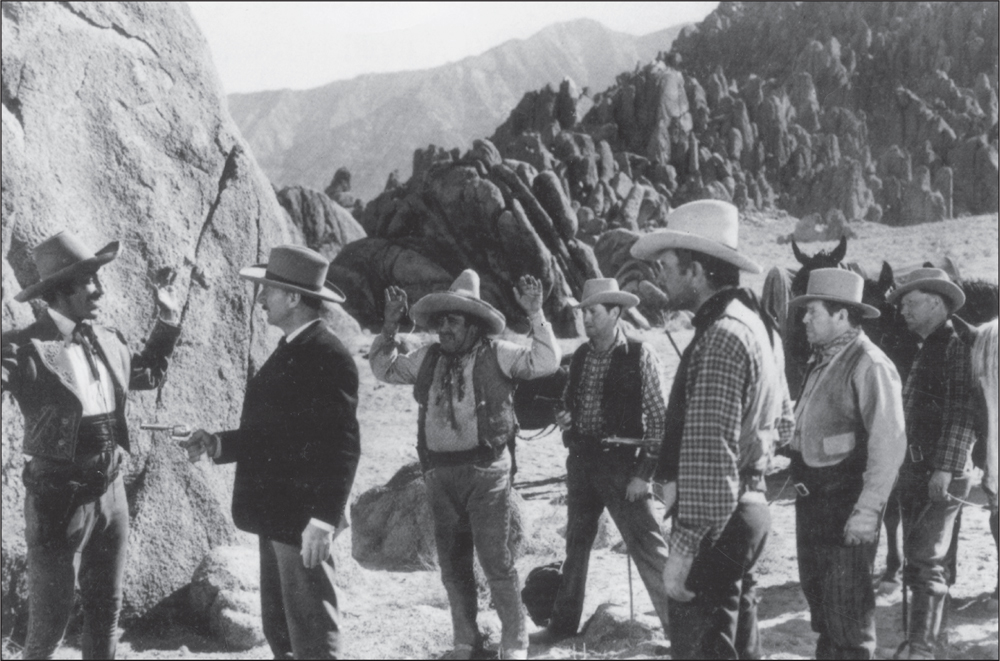
This still is from The Cisco Kid and the Lady (1939), which starred Cesar Romero, who was Tyrone Power’s pallbearer. Below, the author imitates the same scene. This location is off Movie Road near the Gunga Din bridge site.
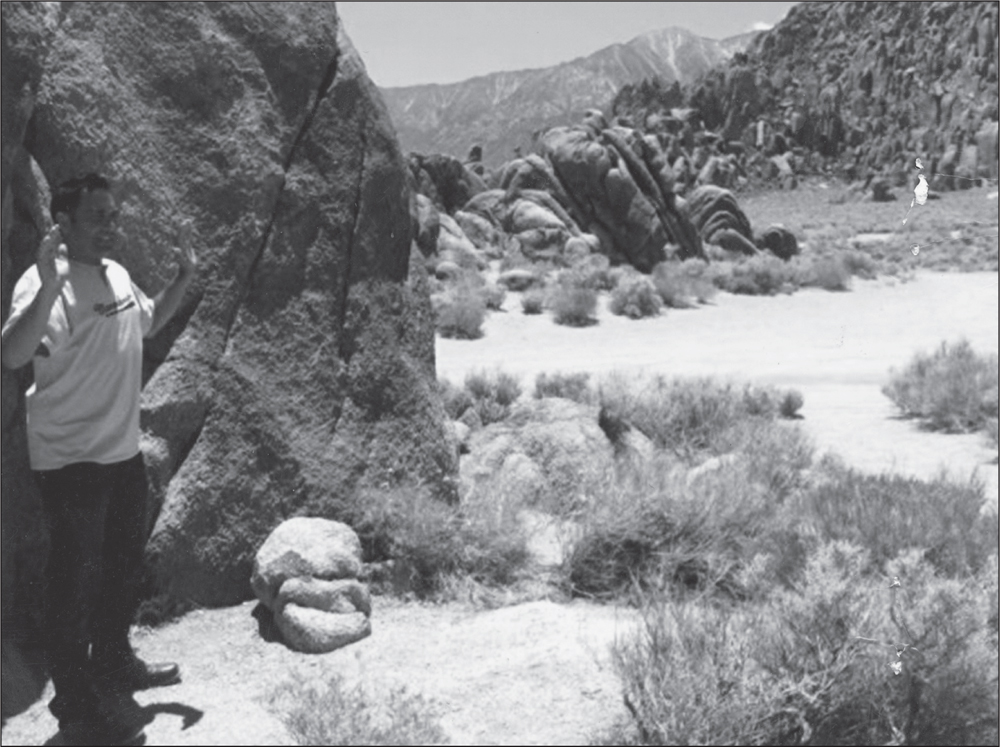
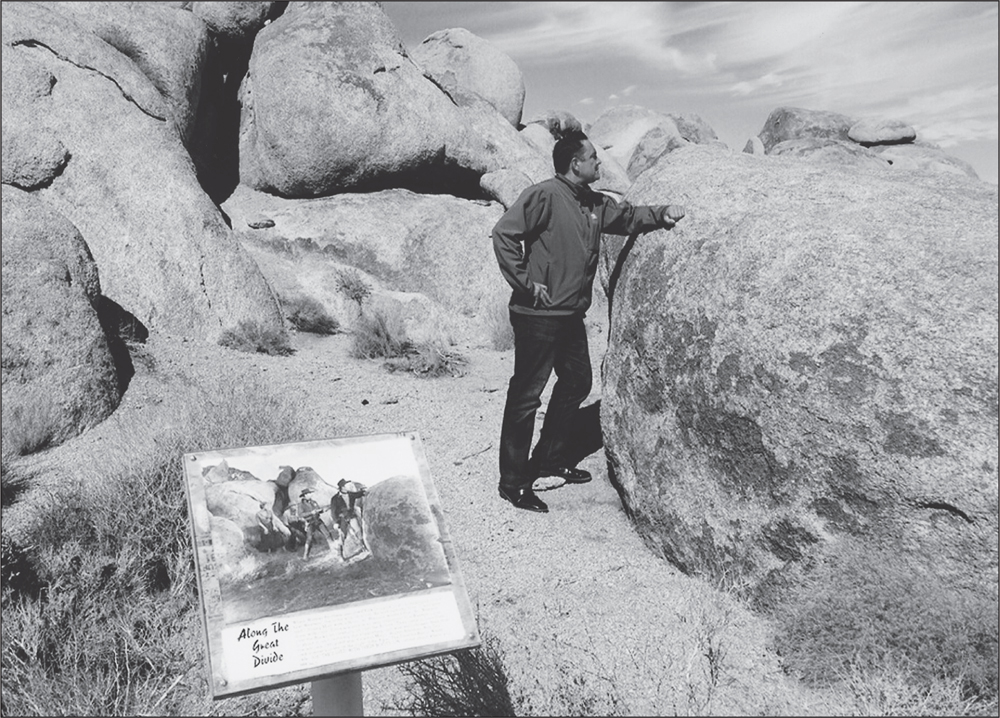
This filming location from Along the Great Divide can be found near Lone Ranger Canyon.
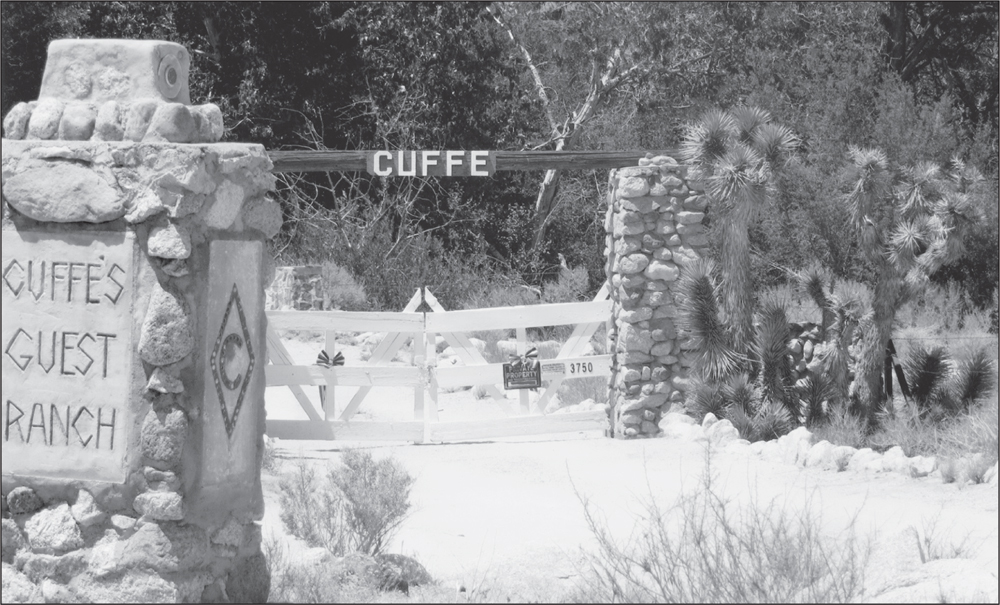
The Cuffe’s Guest Ranch is the former resort of legendary director Clarence Badger. Here, he entertained Mabel Normand, Clara Bow, Douglas Fairbanks, Rex Bell, Will Rogers, and many others in the early days of filming in the Alabama Hills. It was also the filming location of I Died a Thousand Times (1955), starring Jack Palance, Lee Marvin, and Dennis Hopper. There is a bridge nearby called “Bow Bridge” where Clara Bow had a minor car accident.
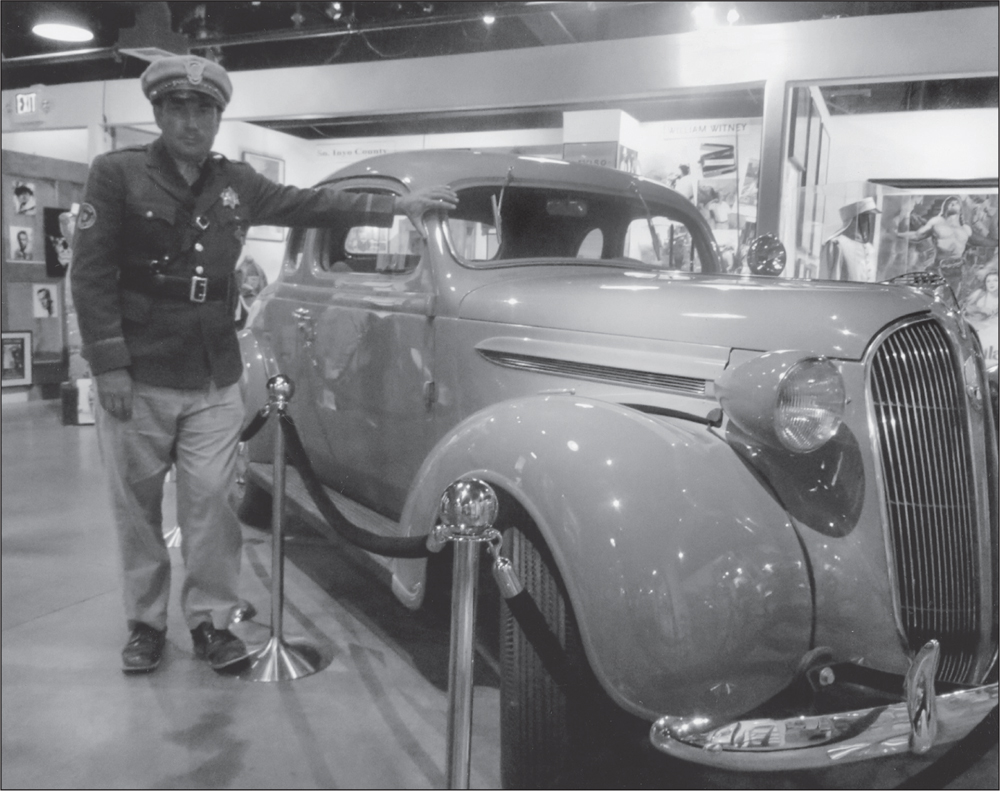
Here, the author wears an authentic California Highway Patrol uniform acquired from Byron Duncan. The car, a 1937 Plymouth Coupe, was driven by Bogart in a chase seen at the end of High Sierra (1941). The car can be viewed at the film museum in Lone Pine.
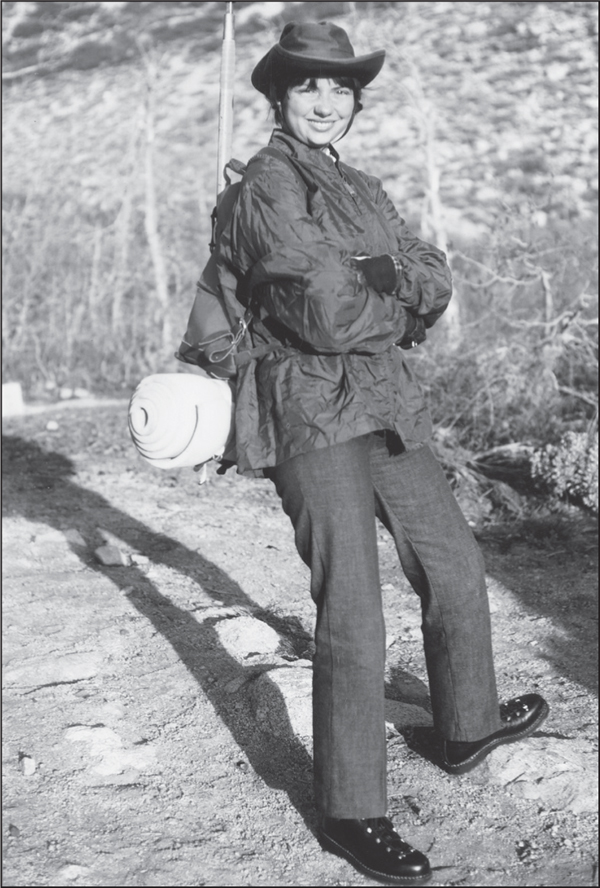
The author’s mother, Jean-Marie Morfin, is shown here backpacking near the Alabama Hills. The area is popular for recreation and is administered by the Bureau of Land Management.
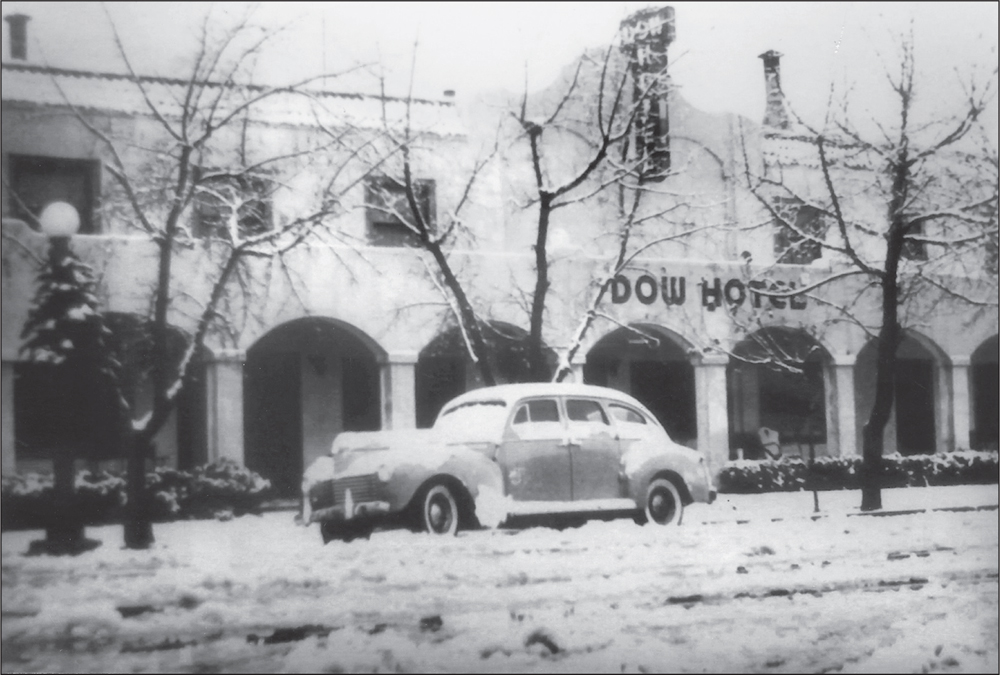
Above, the Dow Hotel is seen around the 1940s with a Plymouth Sedan similar to the one used in Bad Day at Black Rock (1955) and Tycoon (1947), starring John Wayne. Below, the Dow Villa, as it is now called, is pictured in 2013 after a complete restoration of its front facade. Wayne’s room at the Dow Villa had the only in-room spa.
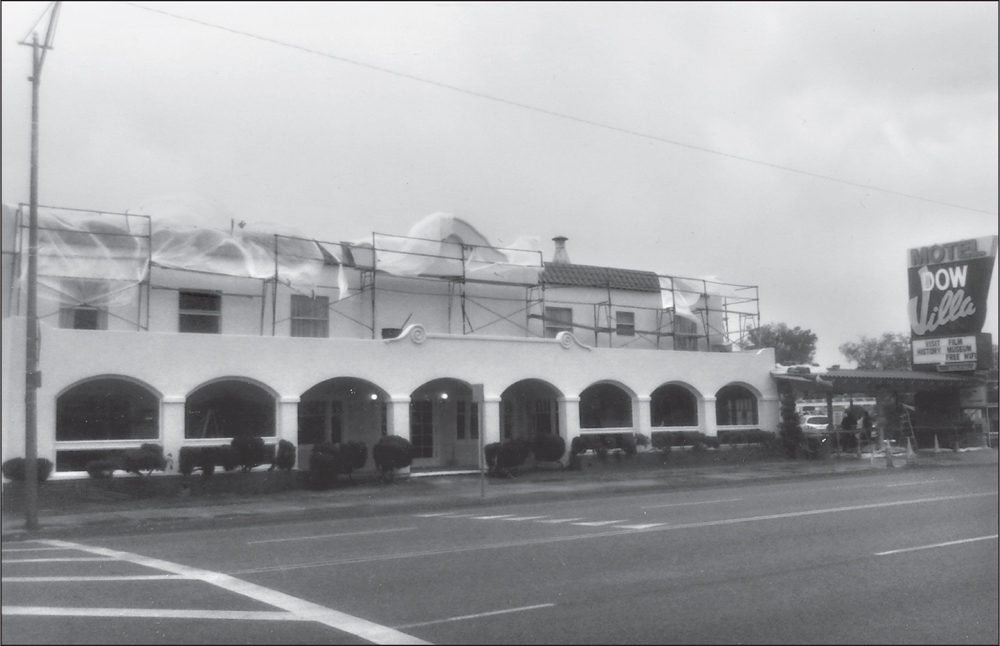
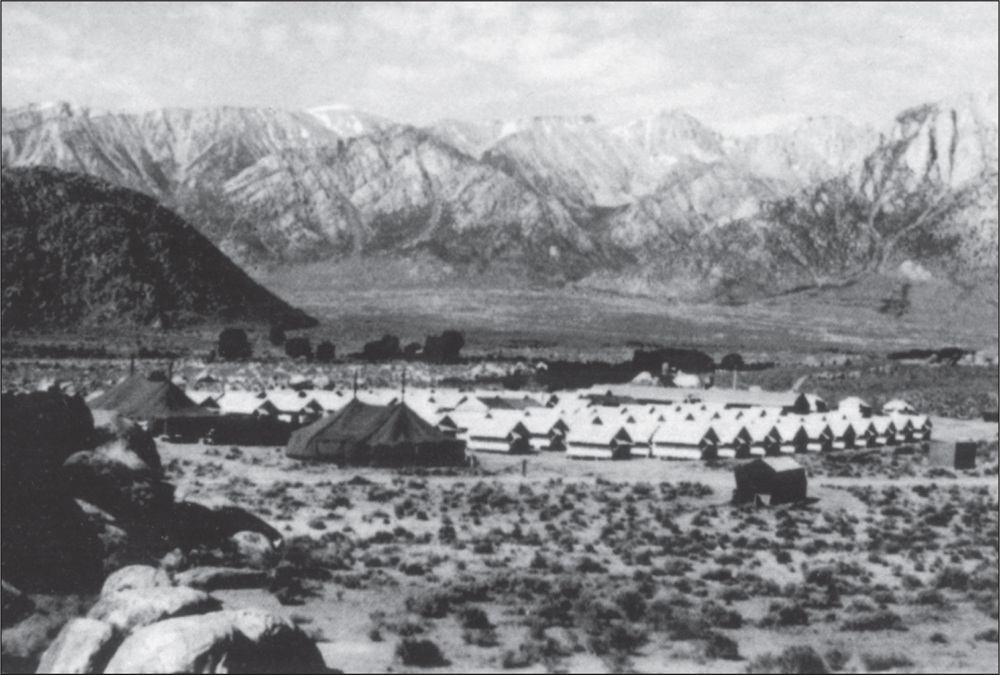
Gunga Din (1939) was the largest production to be filmed in the Alabama Hills. In the image below, the author shows where all the tents and crew were in 1939.
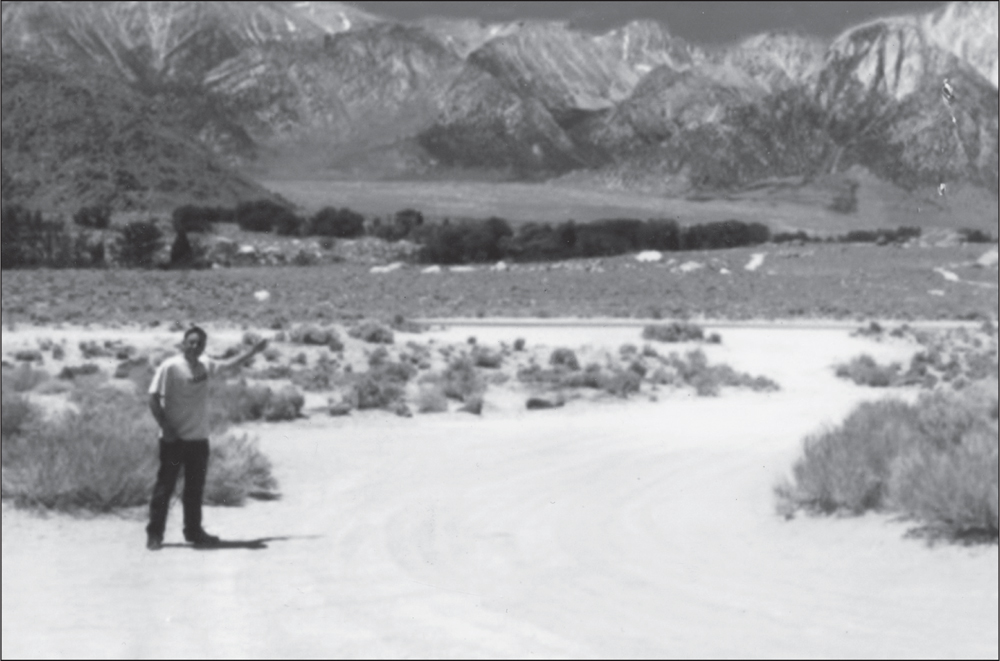
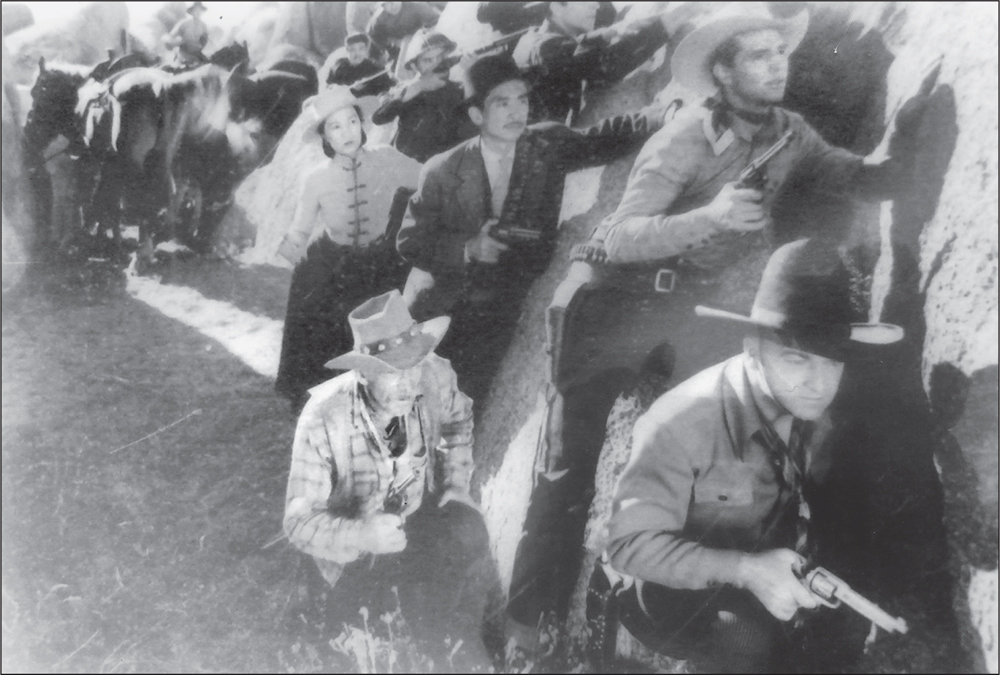
Hopalong Cassidy was one of the longest-running serials filmed in the Alabama Hills. The image above is from one of the 54 episodes and shows “Hoppy” crouching behind a rock. Below, the author poses in same location.
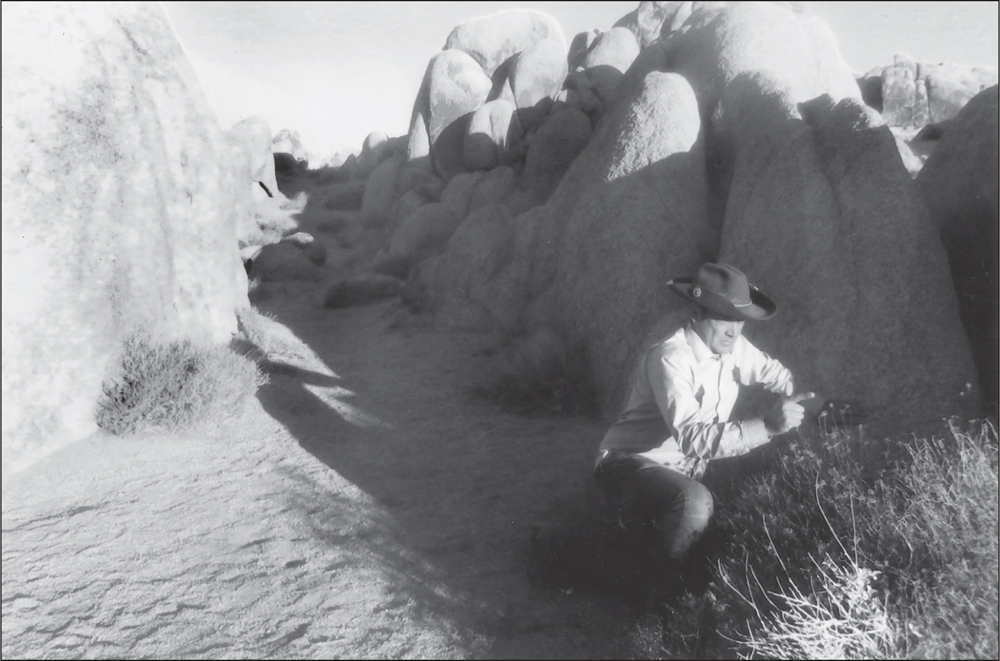
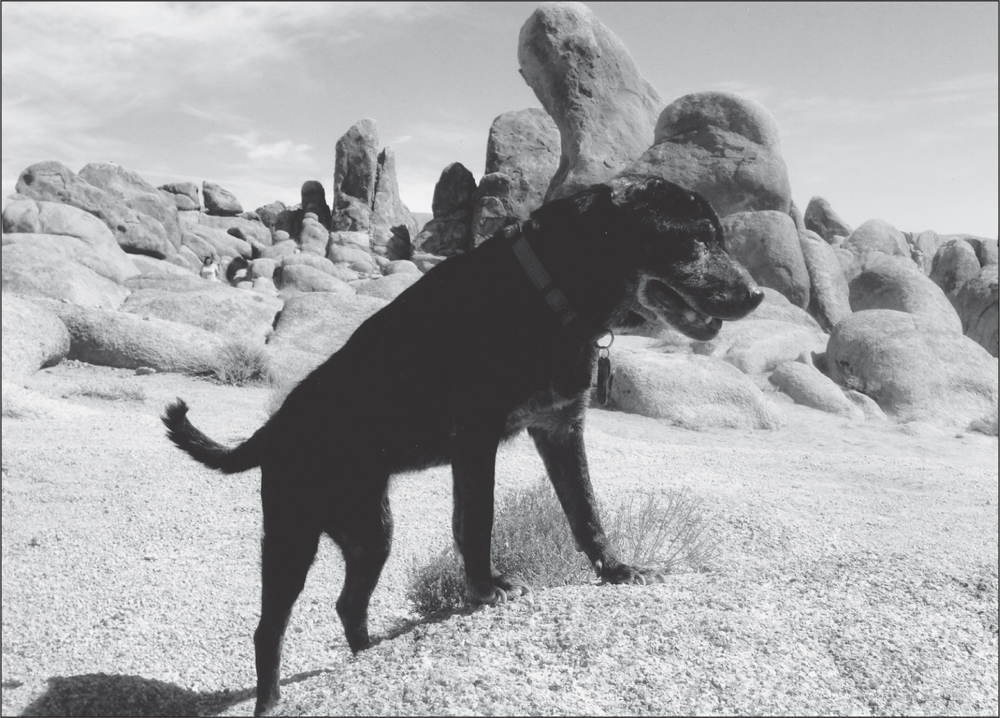
The author’s dog Doughgirl is seen here in her favorite movie location. Guns of Hate (1948), False Colors (1943), Lives of a Bengal Lancer (1935), Boots and Saddles (1937), Django Unchained (2012), and many others were filmed this area.
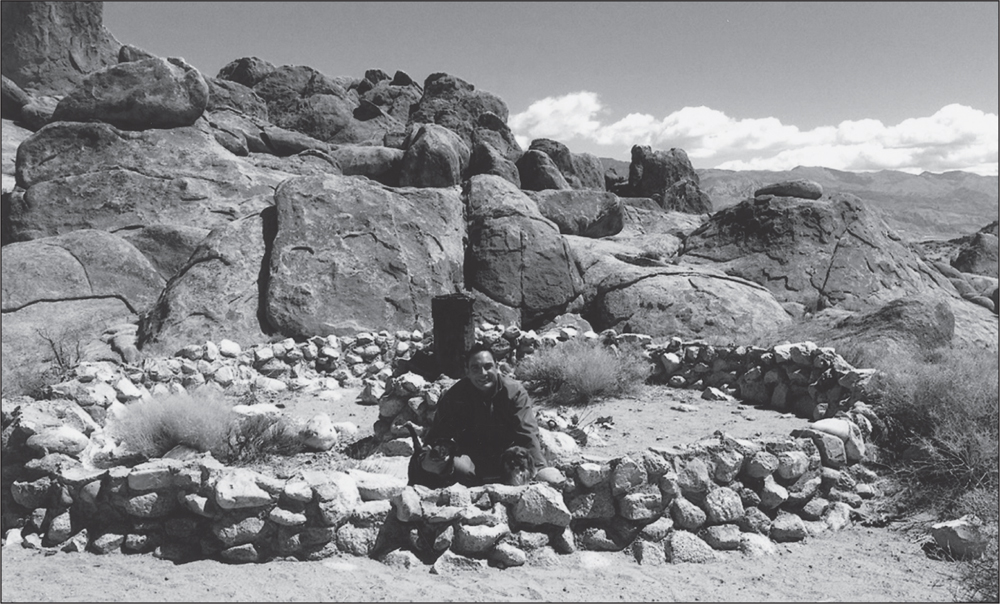
One of the best movie relics from Yellow Sky (1948) can be found north of Whitney Portal Road and west of the Ruiz Hills. It is the aristae, pictured here with the author, Doughgirl, and Ernies imitating Gregory Peck and others from the film.
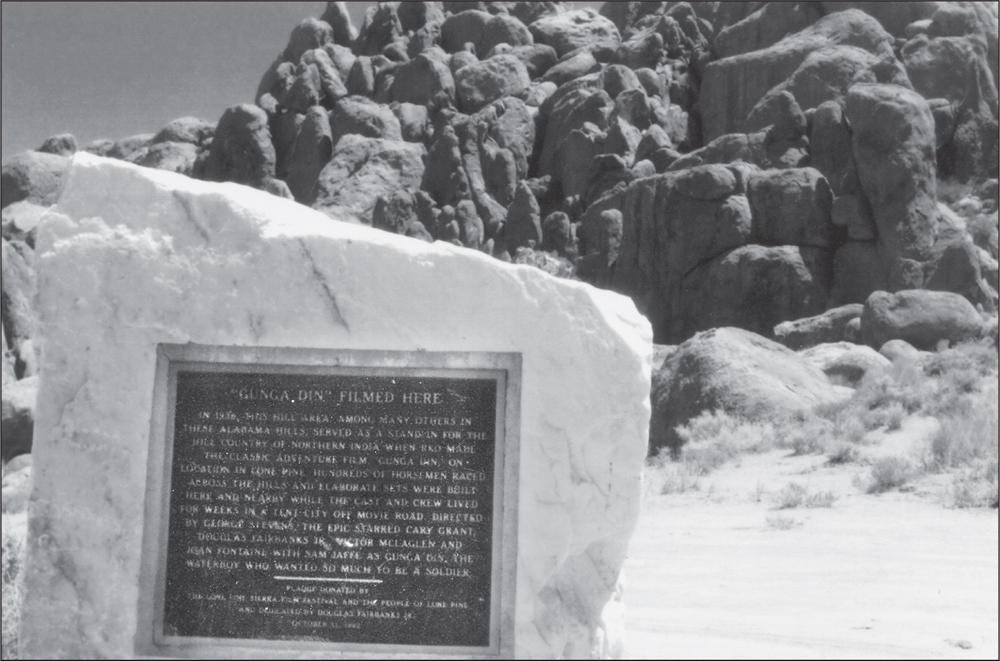
The monument to the temple from Gunga Din is located off Horseshoe Meadow Road from Whitney Portal Road.
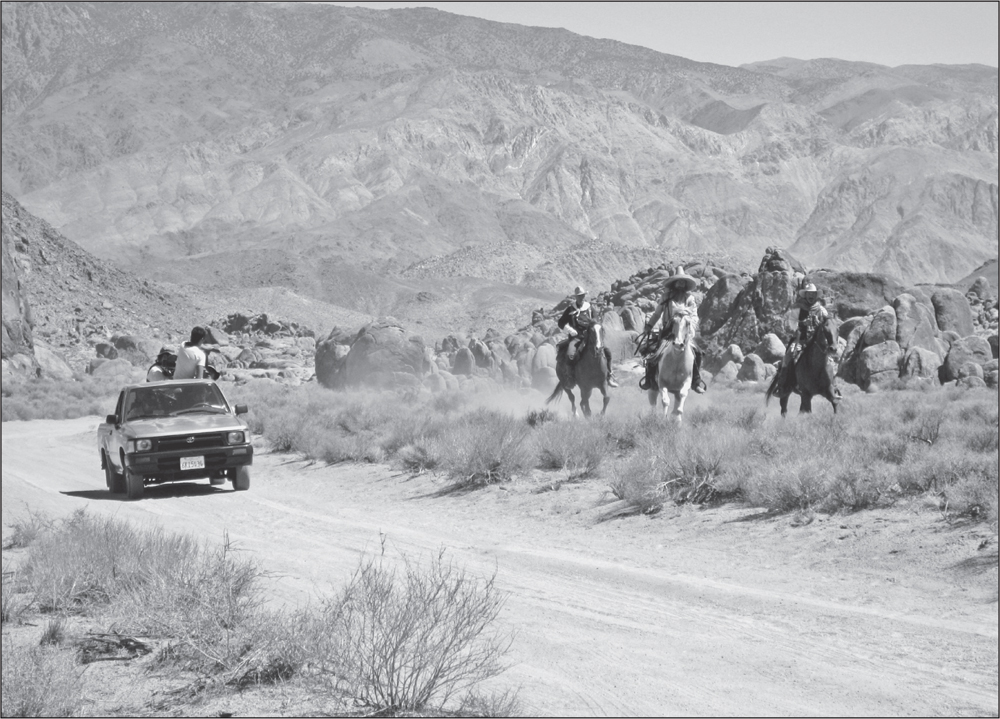
Modern filming crews may still be seen today in the rocks. Here is a crew form Friend of the Devil (2009), a Western short directed by Eric Heisner.